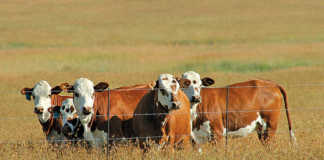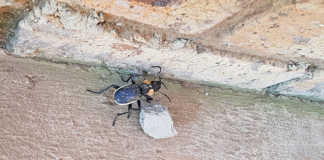
Photo: Prof Piet Goussard
South Africa has a rich winemaking history, dating back to 1659. Even so, the country only has 4 292ha out of 89 384ha that are 35 years or older, and are recorded in the Old Vine Project.
One of the reasons for this is leafroll virus. No formal statistics are available on the number of hectares affected, but Rosa Kruger, founder of the Old Vine Project, estimates that at least 70%, if not 80% of the area under vineyards in South Africa, is to some degree infected with leafroll.
She gave more information on ways to prevent the disease during a vineyard workers development training session held earlier this year in Paarl.
The threat
Leafroll virus affects plant vigour and results in uneven and fewer bunches. Yields of infected vines are at least 15% and on average 20% lower than that of healthy vines, according to Kruger.
Along with this, leafroll virus affects wine quality, making it difficult to produce quality wines and in turn resulting in lower market prices.
Kruger explained that the virus results in a delay in fruit ripening, uneven fruit maturity, poor sugar accumulation and colour development, especially in red varieties.
“The grape skins turn pinkish instead of its characteristic red colour,” she said.
These are major setbacks, as South African farmers are either chasing high volumes to remain financially viable, or focusing on the production of smaller volumes of higher-quality wine grapes sold at better prices.
According to Vinpro statistics released earlier this year, only 9% of wine producers are currently generating sustainable incomes. Thirty-eight percent are farming at a loss, 3% are just breaking even, and 50% are generating low profits.

The reduction in yields also forces farmers to replace affected vineyards earlier.
“Vineyards can grow over 50 years old if you start out with healthy plant material and vines are kept virus-free. Vineyards, however, might have to be pulled out after 15 to 20 years when affected by leafroll virus because of the lower yields,” Kruger said.
Symptoms
The disease can be latent for several seasons before showing any signs. In red varieties, symptoms usually start with a few uneven reddish spots, or even purple, on leaves at veraison, when the grapes start to change colour.
During the growing season, these spots progressively spread to cover most, if not the whole of the leaf, except for the green area bordering the main leaf veins.
The veins tend to turn yellow towards the end of the growing season. Older leaves at the bottom of the shoot usually show the first symptoms.
Leaves of some red cultivars, such as Pinot Noir, Cabernet Franc and Merlot, may curl down, but this is not the case with varieties like Cabernet Sauvignon, Shiraz and Pinotage. Identifying leafroll virus in white varieties is more difficult, as many do not show any physical signs of disease.
The leaves of infected Chardonnay, Cape Riesling and Semillon may turn yellow, while those of Chardonnay may also curl down.
Physical symptoms on white varieties usually signal severe infections, according to Winetech’s ‘Leafroll Control Strategy’ fact sheet.
Leafroll virus can be confused with various other diseases, such as Shiraz disease, Shiraz decline and aster yellows, nutritional deficiencies, such as potassium, phosphate, manganese or magnesium shortages, as well as mechanical damage.
Kruger therefore advises farmers to test their vineyards for the disease if they see signs of red leaves and a decline in yields and wine quality, in order to identify exactly what they are dealing with.
Start clean
There is no cure for the virus, so infected vines must be removed as soon as possible to prevent the disease from spreading. The disease spreads rapidly among vines, with an average year-on-year increase of 1,94 times in the first few years, according to Winetech.
This means that the number of leafroll-infected grapevines can almost double each year.
“Vineyards should be monitored continuously for the disease. Some farms incentivise their workers to do this by offering a cash reward for each leafroll-infected vine they spot,” she said.
Winetech advises farmers to consider the removal of a vineyard when more than 20% of the vines are infected.
The vineyard might be kept if it is still economically viable, but great care should then be taken to prevent the spread of the virus to other vineyards. The best way to prevent the disease is to star toff with virus-free planting material.
For more information, email [email protected].










